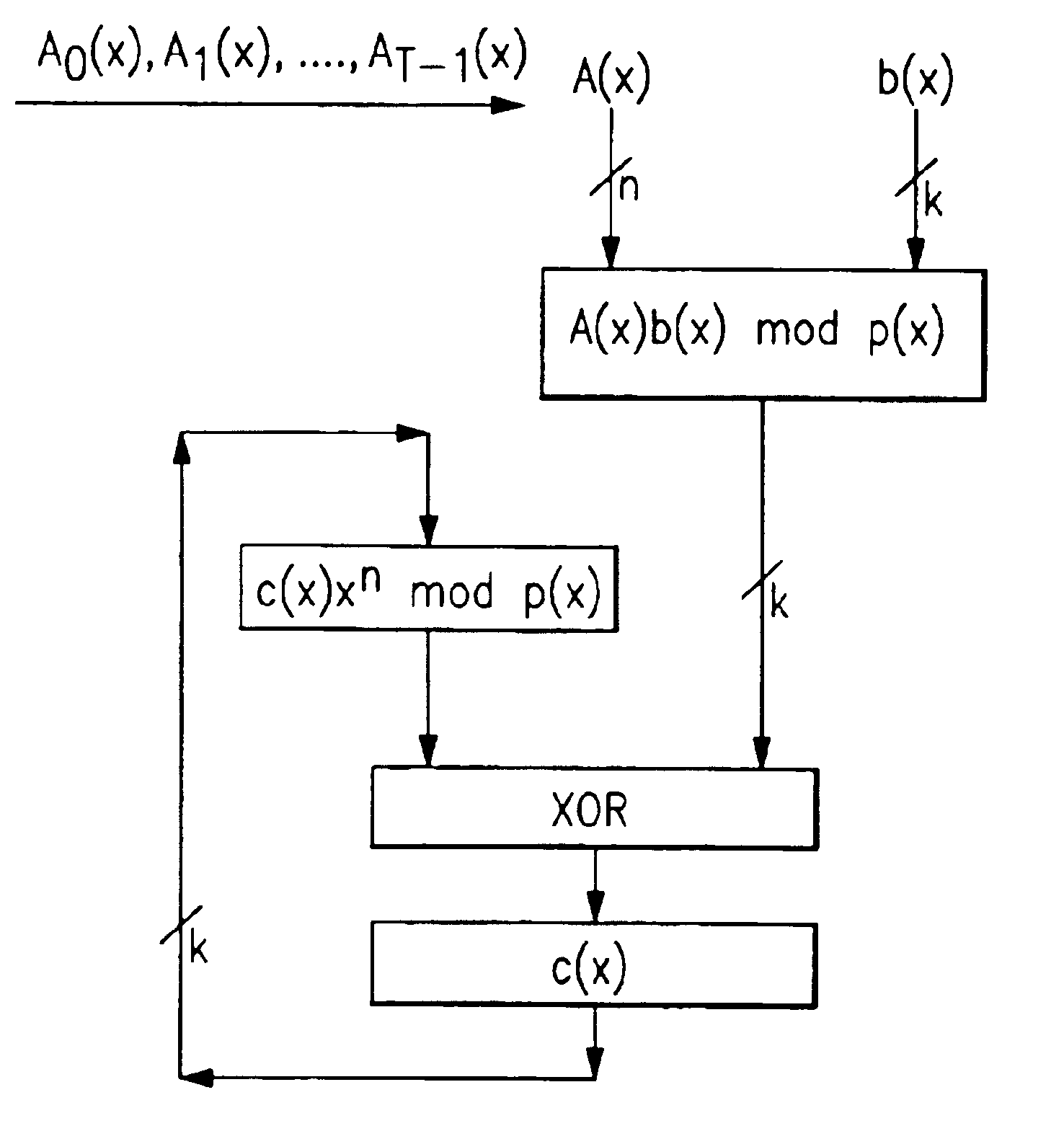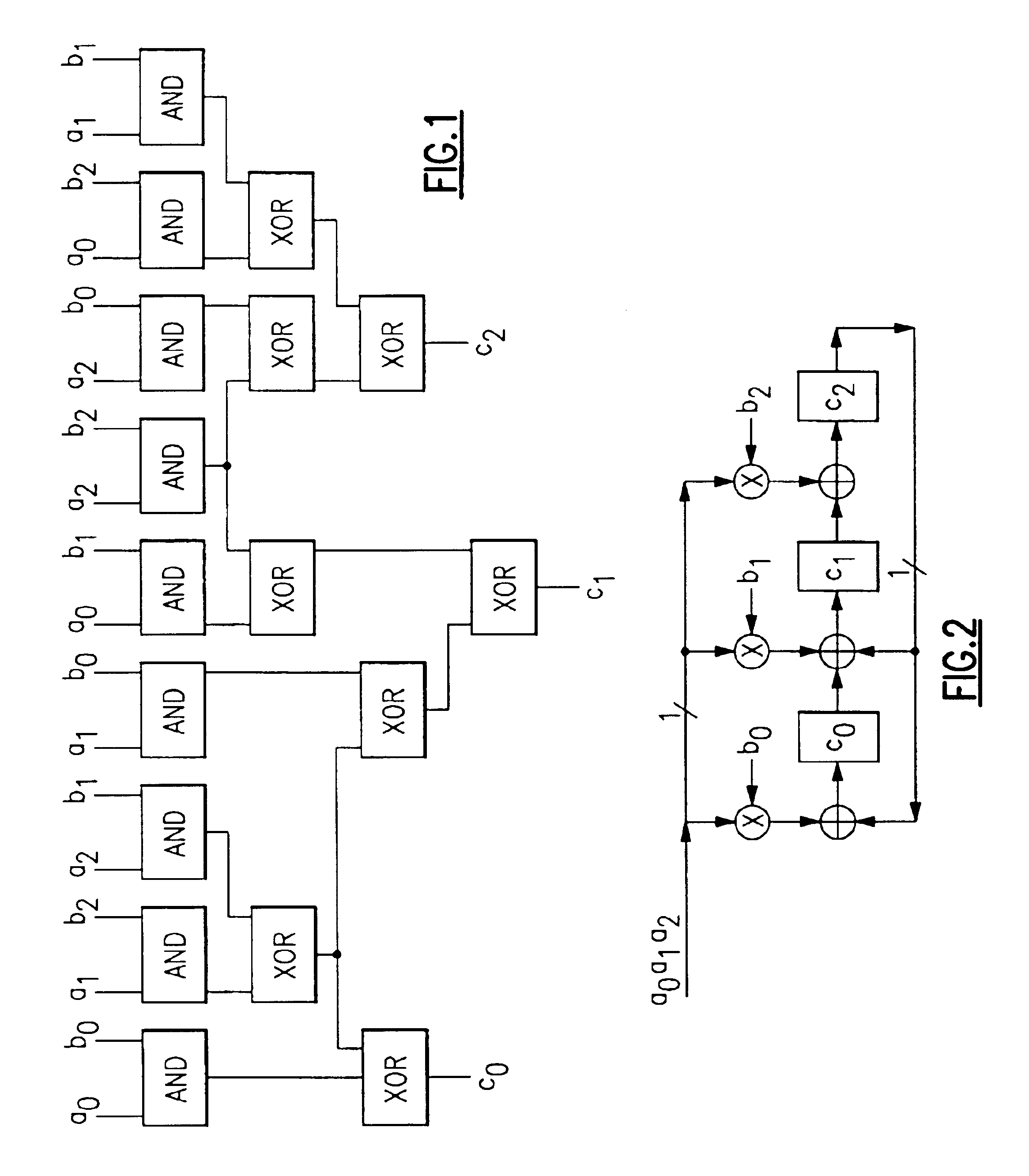Block-serial finite field multipliers
- Summary
- Abstract
- Description
- Claims
- Application Information
AI Technical Summary
Benefits of technology
Problems solved by technology
Method used
Image
Examples
Embodiment Construction
[0024]For a proper understanding of the present invention, consider the field GF(qm), where q is either 2 or a power of 2. An element of F=GF(qm) is represented as a polynomial over GF(q) of degree m−1. Thus, a(x)=am−1 xm−1+ . . . +a1 x+a0, with coefficients a1 in GF(q) F. The element can also be represented by the vector (am−1, . . . , a1, a0).
[0025]The multiplication of two elements a(x) and b(x) in F is the product c(x)=a(x) b(x) modulo p(x), where p(x) is an irreducible polynomial of degree m over GF(q). For example, for explanatory purposes, consider q=2, m=3, F=GF(23), and p(x)=x3+x+1. Let a(x)=(a2 x2+a1 x+a0), b(x)=(b2 x2+b1 x+b0), and c(x)=(c2 x2+c1 x+c0). Then c(x)=a(x)b(x) mod p(x)=a2b2x4+(a2b1+a1b2)x3+(a2b0+a1b1+a0b2)x2+(a1b0+a0b1)x+a0b0 mod x3+x+1=(a2b0+a1b1+a0b2+a2b2)x2+(a1b0+a0b1+a2b1+a1b2+a2b2)x+(a0b0+a2b1+a1b2)
Note that addition in the binary field GF(2) is the same as XOR. FIG. 1 is a bit-parallel implementation of c(x)....
PUM
 Login to View More
Login to View More Abstract
Description
Claims
Application Information
 Login to View More
Login to View More - Generate Ideas
- Intellectual Property
- Life Sciences
- Materials
- Tech Scout
- Unparalleled Data Quality
- Higher Quality Content
- 60% Fewer Hallucinations
Browse by: Latest US Patents, China's latest patents, Technical Efficacy Thesaurus, Application Domain, Technology Topic, Popular Technical Reports.
© 2025 PatSnap. All rights reserved.Legal|Privacy policy|Modern Slavery Act Transparency Statement|Sitemap|About US| Contact US: help@patsnap.com



